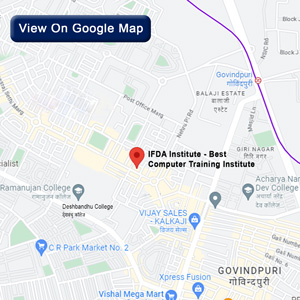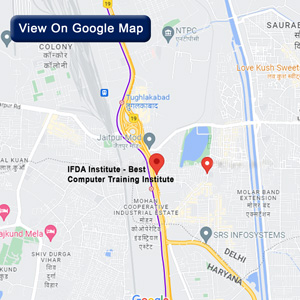Exploratory Data Analysis

It must be stressed that knowing your data is the first and most important rule in data science and analytics. Exploratory Data Analysis (EDA) is among the different processes that assist you in doing so. Descriptive analysis is the process of examining the basic characteristics of a dataset, its distribution, and employing simple graphics, etc., to make inferences, search for outliers, and formulate hypotheses.
What is exploratory data analysis, or EDA for short?
Exploratory data analysis is a way of doing data analysis, the main goal of which is to describe
the main features of the given data and usually involves graphical data summaries. Originally, it
was known as exploratory data analysis and was introduced by the statistician John Tukey in
the 1970s as a method to ‘look at the data’ before making any assumptions or applying any
statistical model to it. The whole point of EDA is to be open to discovering what the data has to
say outside of the formal modeling or hypothesis testing exercises.
The writing of EDA is unstructured; it is not prescriptive and does not require the analyst to
follow strict protocol when analyzing data. The exploratory data analysis is useful in achieving
the following goals by visualizing data and utilizing descriptive statistics:
1. This means that one should understand the structure of data used in the analysis.
2. Also, it is necessary to determine such variables and the correlation between them.
3. Detect outliers or anomalies.
4. Look for antecedents that should be made before proceeding with another step of the
analysis.
5. Introduce the variables under consideration and come up with hypothesis statements with
regard to the data resource.
Why is EDA important?
Generally, EDA is important because it enables analysts to understand their data and preprocess them for further analysis. Here are some reasons why EDA is a fundamental step in any data analysis project:Here are some reasons why EDA is a fundamental step in any data analysis project:
Data Cleaning: It assists in removing errors or inconsistencies in data because EDA is nowadays an essential part of data analysis workflows. This might include managing cases where the data is missing, errors in data entry, or simply managing outliers.
Data Summarization: Descriptive statistics also refer to essential indicators where you can make a quick summary about the general information of data through mean, median, and standard deviations.
Insight Generation: It is a routine process to perform before getting to know some patterns or trends more appropriately referred to as EDA.
Hypothesis Testing: EDA is used in data analysis to find relationships between variables and create hypotheses, which may then be tested using other statistical tests.
Model Preparation: When you employ EDA, it allows you to pick the right model to use and the appropriate variables to use in your analysis, hence improving your likelihood of making better predictions.
Common Techniques Used in EDA
Techniques Generally Applied in Exploratory Data Analysis
Depending on the research question under consideration, EDA can be quite simple and involve little more than creating a few figures, histograms, or even box plots, or it may include numerous statistical tests. Here’s an overview of some of the most commonly used EDA techniques:Here’s an overview of some of the most commonly used EDA techniques:
1. Descriptive Statistics
The first basic type of statistics is descriptive statistics, which gives basic information on the
analyzed data. They can be either measures of central tendencies (mean median, mode) or
measures of variability (range variance, standard deviation).
Mean: The mean of a set of values, which in context to a data set is the sum total of all of the
recorded values divided by the quantity of values inside the data set.
Median: The value that lies at the middle of a set of different numeric values; after the set, they
have been arranged in an ascending or descending order.
Mode: The mode of the report, which means the value that occurs most often in the dataset.
Variance: Shows how far each of the values is from the arithmetic average.
Standard Deviation: The measure of dispersion as defined by the square root of the variance to
provide an assessment on how spread out the data is.
2. Data Visualization
It is commonly accepted that the concept of visualization is one of the most efficient tools in
EDA. This means that you can observe correlations and comparisons that could otherwise be
very hard to decipher from big data statistics. Common visualizations used in EDA
include:Common visualizations used in EDA include:
Histograms indicate the distribution of one variable.
Box Plots: State some characteristics of a variable distribution and focus on large values.
Pair Plots: Represent the correlation between two or more variables in a data set.
Heatmaps: Display relations between variables in tabular form by matrix.
Standard Deviation: The measure of dispersion as defined by the square root of the variance to
provide an assessment on how spread out the data is.
3. Correlation Analysis
Correlation analysis deals with the nature of the relationship between one or more variables. It
assists in knowing whether an increase or a decrease in one variable causes an increase or
decrease in another variable.
Pearson Correlation Coefficient: analyzes the strength or direction of the association of two
quantitative variables.
Spearman’s Rank Correlation: weights how strongly two variables are related to each other
when the data has been ranked.
4. Handling Missing Data
How to deal with missing data is usually always discussed under EDA. There are several
strategies to deal with missing values:There are several strategies to deal with missing values:
Removing: If the percentage of missing data is small, then you can consider removing rows or
columns that contain this data.
Imputing: Some of the advanced data cleaning techniques involve substituting the missing
values with some estimate; for example, use the mean, median, and mode of the data.
Predictive Imputation: Impute the missing date values using algorithms so as to proportionally
supplement the missing values using other data in the dataset.
5. Outlier detection
Skewing values or possible outliers can raise your data summary, so it is very crucial to detect
them during EDA. Techniques for detecting outliers include:Techniques for detecting outliers
include:
Box Plots: Imagine outliers may occur.
Z-Score: an indication of the level at which certain variable factors differ from average, on
average indicating their variation degrees.
IQR (Interquartile Range): Uses the 50% of the data that is right smack in the middle if the data
were to be arranged in ascending order.
6. Univariate Analysis
First, let us consider the general approach for data analysis, which includes univariate analysis,
where the examination is limited to one variable only. Descriptive statistics are used so as to
determine the distribution process, the central value, and also the spread of data points.
Histogram: Creates a graphical representation to represent one variable only.
Box Plot: It shows how a certain amount of data behaves and also tells where the outliers are.
Density Plot:Simply put, it’s just like a histogram with its smoothened version.
7. Bivariate and Multivariate Analysis
Two-variable analysis focuses on finding the association of two variables, while three-variable
analysis or more-variable analysis focuses on the association between three or more variables.
Scatter plot: Applied in bivariate statistics in order to determine the nature of the two variables.
Pair Plo: In multivariate analysis, used to map the interdependency of several variables at a
time.
Correlation Matrix: Bivariate measures for pairwise relations provide a general description of the
interrelation of a set of variables.
7. Tools for EDA
Several tools can assist with EDA, each offering a variety of features to help you analyze your
data:
Python (Pandas, Matplotlib, Seaborn): This is due to the fact that Python’s libraries, meant for
data analysis, are useful in EDA. Pandas is powerful for data manipulation, Matplotlib is good
for visualization, and Seaborn is even better for the same.
R: : R is another common platform for analytics work with strong packages for graphic
representation such as ggplot2 and commands for data manipulation such as dplyr.
Tableau: An effective instrument for data representation that gives the abilities to create
web-based and interactive dashboards.
Excel: Still, it is worth mentioning that Excel is not as advanced as some of the other tools, yet it
is pretty effective for EDA when it comes to rather small datasets and elementary data
visualizations.
Steps in Conducting EDA
Conducting EDA involves several key steps:Conducting EDA involves several key steps:
1. Understand Your Data: To achieve this, first of all, you need to acquaint yourself with the data
you are dealing with. What does the letter represent? If it is not clear, what are the variables
used in this case? What is the frequency distribution, and is it displayed in the format of a bar
chart or frequency polygon?
2. Clean Your Data: Clean the data, and it involves dealing with cases where data is missing,
duplications, and cases where data has to be corrected.
3. Visualize the Data: In order to analyze the data and discover relationships, trends, and
anomalous values, it is necessary to employ graphics.
4. Summarize the Data: Describe the measures of central tendencies and measures of
dispersion for numerical data.
5. Analyze relationships: Testing for distributions and associations between the variables may
help to determine what areas could be investigated further.
6. Document Findings: Record your EDA output: While exploring through the data, the
knowledge you accrued ought to be noted down. These can be helpful when you are to go to
the next level of analysis.
Visit for this Course
Conclusion
Exploratory data analysis is one of the important phases of any data analysis. This is the last analysis before moving to a deeper analysis; it enables one to understand the data and patterns and prepare for further analysis. As can be seen through this blog, there are many techniques and tools out there that can help you dissect your work and make it much more efficient in the process. Regardless of your role, whether as a data scientist, analyst, or anyone using big data, EDA, as pointed out, is a must step to work through.
- Written By - Natasha Singh









